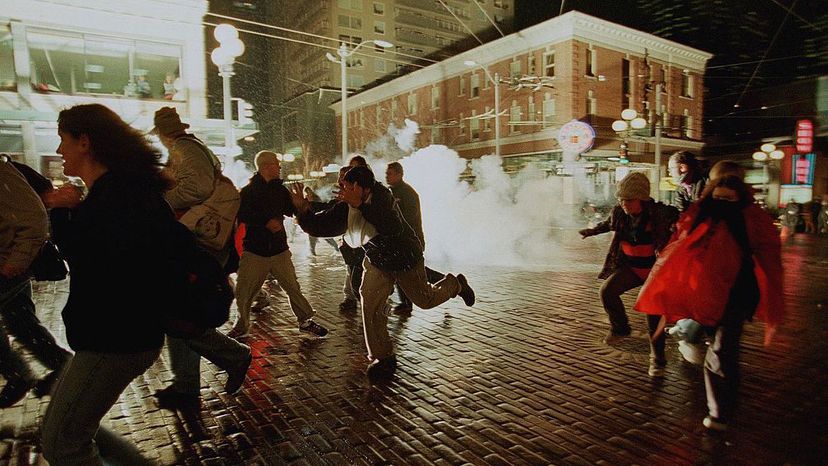How Has Anarchism Evolved?

The international anarchist movement had been crushed by the events we described previously, but the philosophy lived on. The hippie counterculture that arose in the U.S. in the 1960s, with its defiant resistance to government authority and its communal lifestyle, adopted many of anarchist ideas. One hippie activist group, which sought to create a money-free economy through recycling of surplus goods, even called themselves the Diggers, in homage to the proto-anarchist farmers of the 1600s [source: Misiroglu].
And some 1960s radicals, as late 19th-century anarchists had, saw violent revolution as the only way to fix society's injustices. A popular 1971 book called "The Anarchist Cookbook" even gave "recipes" on how to make weapons and explosives. The author, William Powell, later renounced violence and asked for the book to be taken out of print. However, the copyright didn't belong to him but to his publisher, who refused to do so [source: Sandomir].
Advertisement
Toward the end of the 20th century, anarchism began to rise again. The emergence of the internet — where information often was free, rules seemed made to be broken and like-minded individuals could easily find one another — provided a fertile breeding ground for new converts. The rapid growth of multinational corporations and economic globalization, fostered by free-trade agreements, prompted a growing backlash from those who believed that ordinary people were getting the short end of the deal and that demolishing the power structure was the only way to fix that.
In 1999, anarchists took to the streets to disrupt World Trade Organization talks in what became known as the Battle of Seattle. The images of police officers in riot gear shooting tear gas at hordes of black-clad protesters shocked the world.
Other protests followed, such as the takeover of Manhattan's Zuccotti Park in 2011 by the Occupy Wall Street movement, a group that seemed to organize spontaneously. Occupy's members adopted what they termed "principles of solidarity" that called for direct democracy, eliminating exploitation of labor and other reforms similar to those anarchists have advocated [source: Kazin].
And on the internet, a loose confederation of hackers who called themselves Anonymous began threatening retribution against various institutions. Their messages often were delivered in the form of a video featuring a voice-altered person wearing a Guy Fawkes mask — a symbol borrowed from the graphic novel "V for Vendetta," in which an anarchistic vigilante challenges a fascist regime [source: Wells].
Anarchism is constantly evolving. A newer form is anarcho-primitivism, which advocates rejecting "civilized" life and returning to the hunter-gatherer ways of our very ancient ancestors. This process is called rewilding [source: The Anarchist Library].